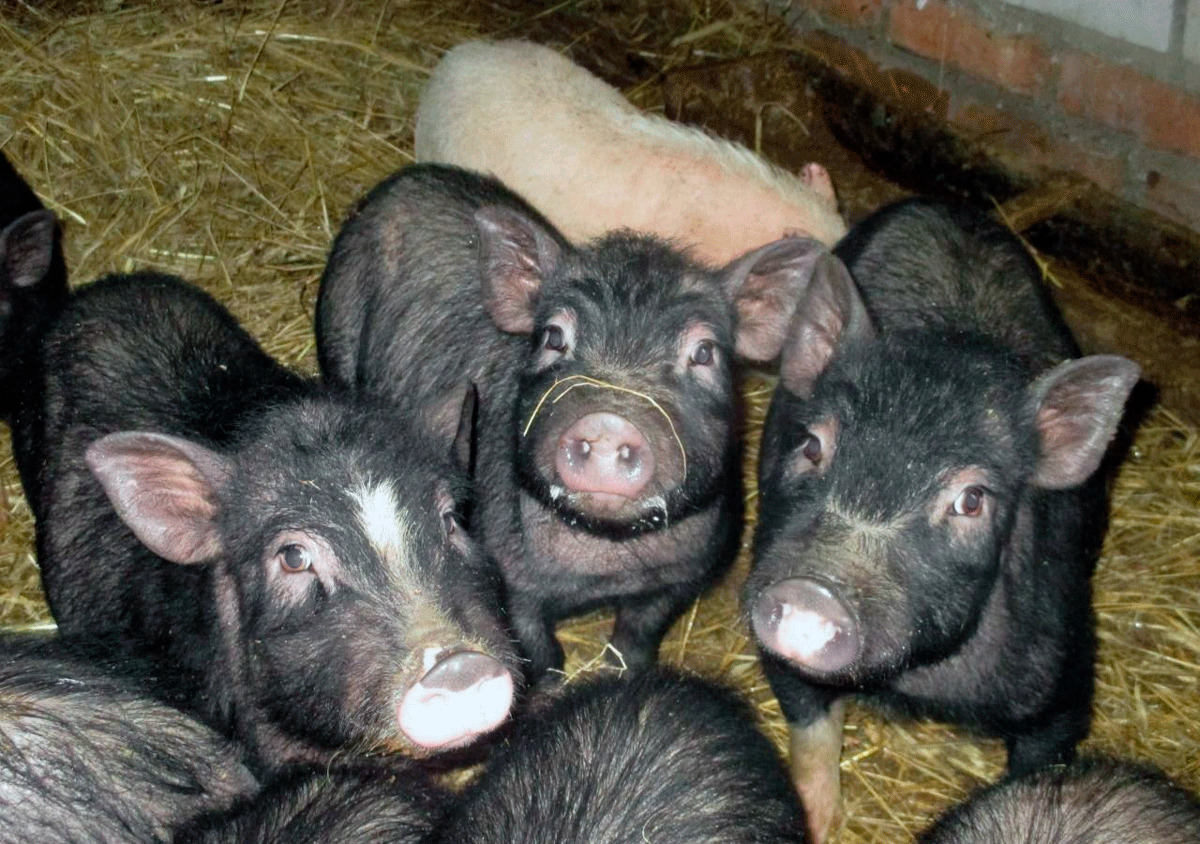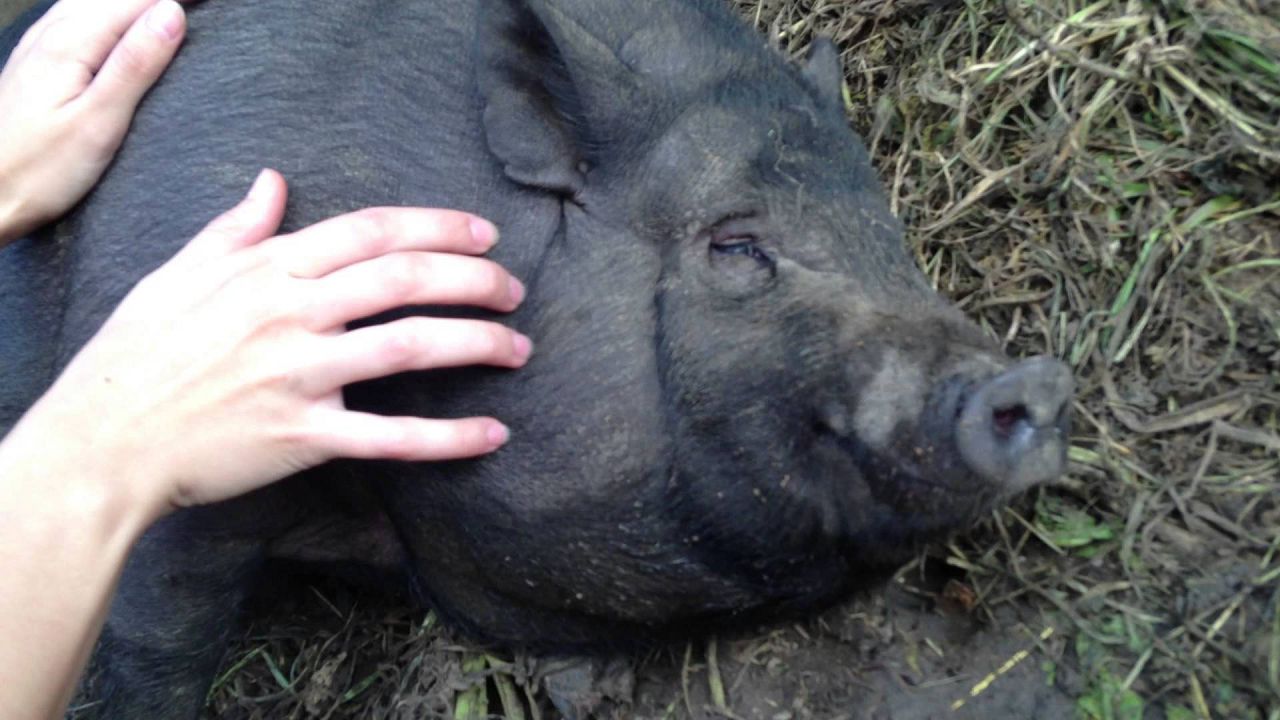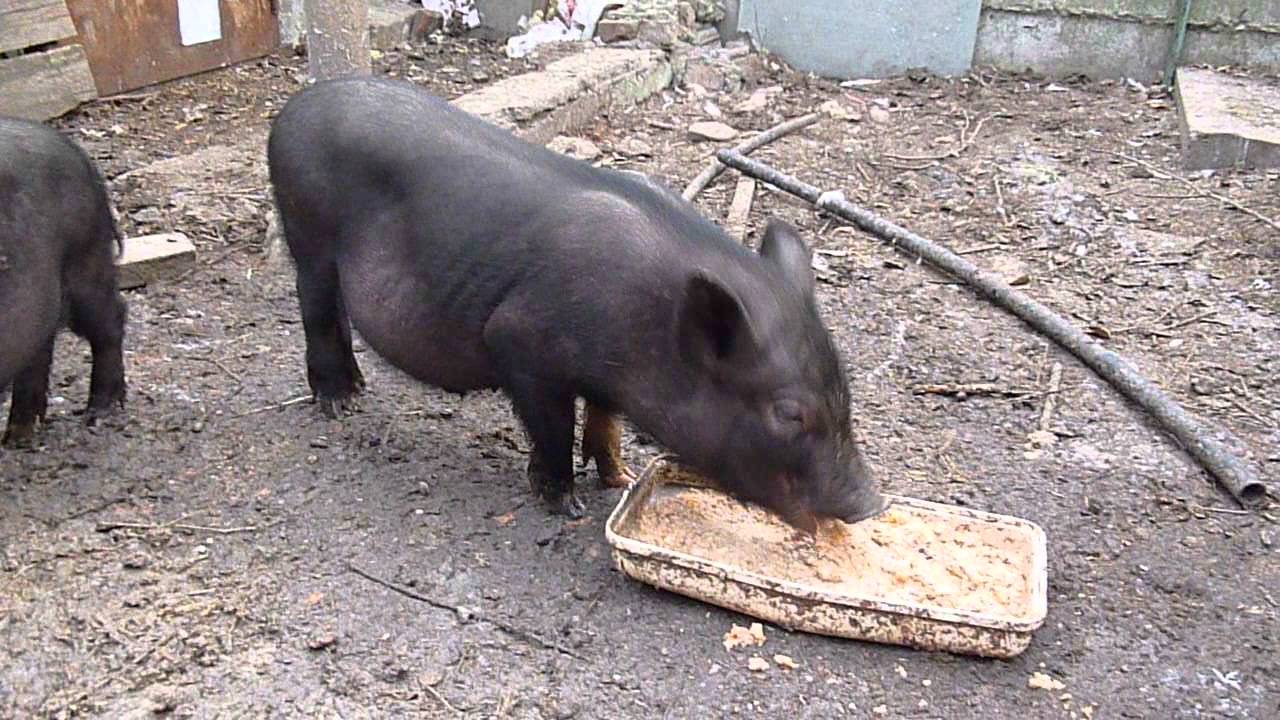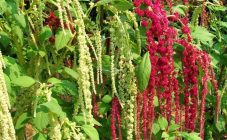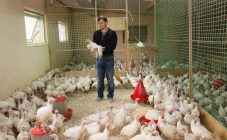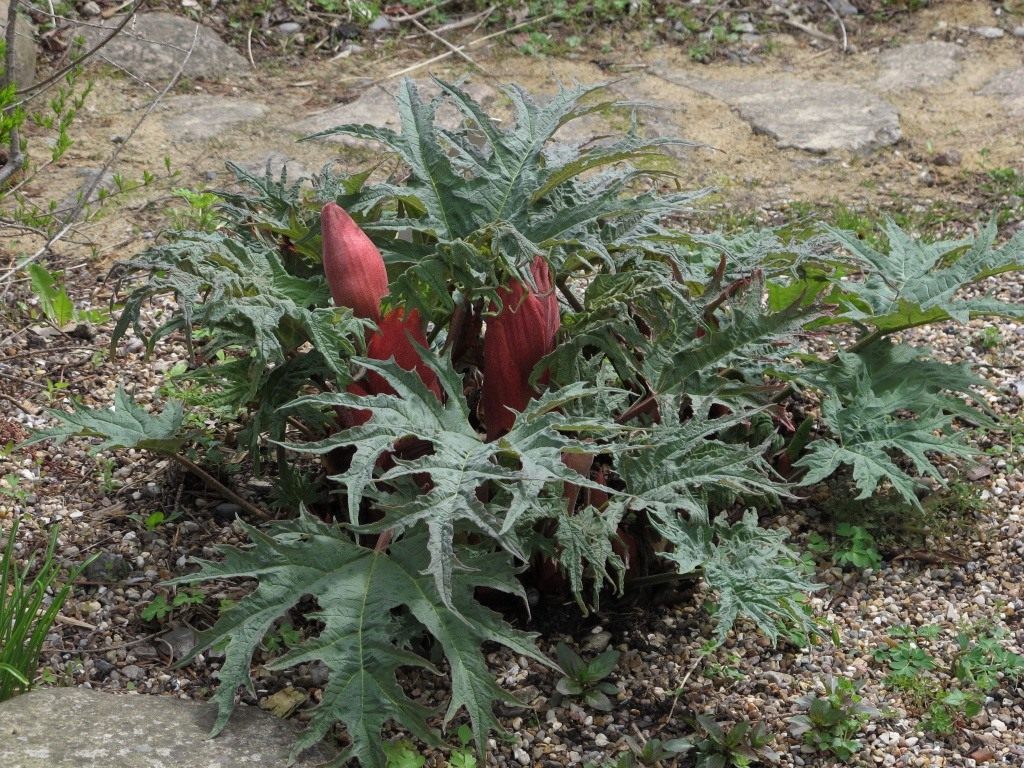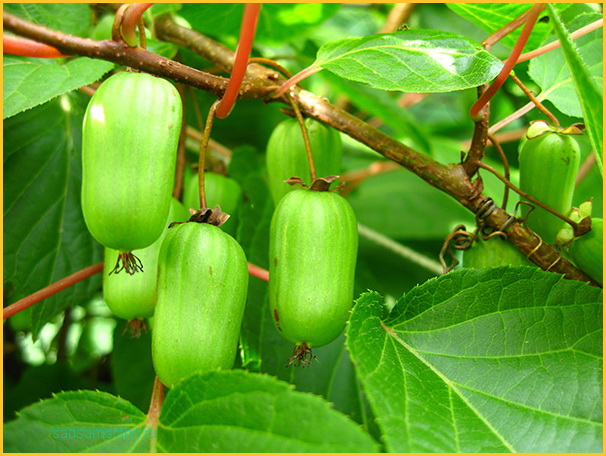Content:
Vietnamese pot-bellied pigs are becoming increasingly popular among farmers. Despite the fact that they appeared in Russia and the CIS countries not so long ago, there are already many conflicting rumors about them. Be that as it may, raising Vietnamese wild-eared pigs is a profitable business.
Vietnamese pigs: characteristics and description of the breed
The Vietnamese pot bellied pig was bred in Southeast Asia. In some European countries and Canada, representatives of this breed were brought from Vietnam (from which the name came) in 1985. Due to its predominant features, the fold pig has received recognition from American, Canadian and European livestock breeders. Despite the large number of advantages, the specialists are faced with the task of continuously increasing productivity indicators, increasing the size of animals.
In Russia, Vietnamese black pigs appeared relatively recently. Many farmers agreed that there are several similar breeds of bell-belly, for example, Japanese, Vietnamese and Korean. It should be immediately clear that Korean and Vietnamese pigs are the same breed. And Japanese pigs are often called ornamental dwarf piglets Migi-pigi, which were bred from Vietnamese hanging belly.
This breed has its own characteristics that must be considered when breeding, keeping and caring for pigs. Many of them can be attributed to the advantages that provide such popularity of the species around the world.
- Early maturation of this species. Owners should be aware that four-month-old females and half-year-olds are considered adults. Reviews from farmers indicate that the Vietnamese pig reaches puberty at 3.5 months, and it can cover.
- Keeping and caring for newborn Vietnamese piglets is simple. The fact is that sows have a well-developed maternal instinct, to a greater extent they do everything independently, do not interfere with the necessary intervention of the breeder.
- Pigs of this breed have an extremely strong immune system, they adapt to all environmental conditions. Despite the fact that the homeland of Vietnamese pigs is a hot country, they can successfully grow in the Moscow region and much further north, for example, in Siberia.
- The meat of Vietnamese pigs is considered to be delicious because it is extremely soft, tender and juicy. Lard and lard, as a rule, do not exceed 2-3 fingers in thickness and have good taste. Carcasses are usually cut into two halves.
- This breed is practically not subject to infection with pig diseases, therefore, it does not need to be vaccinated. The only problem that can cause significant damage to the health of animals is helminths (worms). It is impossible to protect pigs from them, therefore it is very important to regularly carry out all the necessary preventive measures.
- Sows of this breed are characterized by high rates of fertility. Each litter can have up to 18 piglets, so approximately 24-26 piglets can be obtained per year.
- Vietnamese Fold piglets have excellent genetic memory, which excludes the possibility of eating poisonous herbaceous plants.
- Feeding is one of the main components of successful farming. Vietnamese pigs eat a little, but often. Food should be fortified with green foods. But you cannot limit them to one pasture.
- Another unique feature of the breed is its cleanliness. Representatives of this species have clearly defined boundaries of the toilet and habitat. This is a significant advantage, since the task of cleaning the premises is not so urgent for the farmer.
Description of appearance
To acquire purebred Vietnamese piglets, you need to familiarize yourself with the external signs of the species. They are pretty typical.
- No wonder the breed is called vislobrykhim. This is due to the constantly drooping belly, in small pigs it is not so noticeable, and in adults, the belly can reach the ground.
- This breed is black in color, but different shades can be observed.
- The muzzle is slightly flattened.
- The weight of adults reaches from 70 to 80 kg, with prolonged maintenance, their weight can reach 150 kg.
- Quite wide back and chest.
- Pigs are squat due to short legs.
- Ears are erect, small in size.
- Piglets are covered with stubble.
Vietnamese pig breed: breeding features, farrowing
Before purchasing Vietnamese piglets, you should take care of the preparation of the premises. These artiodactyls are picky neither to living conditions, nor to care.
Adult Vietnamese piglets grow up quite compact, which makes it possible to grow a real farm in a small area.
- If the farmer plans to keep Vietnamese piglets for a long time, it is advisable to build a real pigsty out of gas silicate blocks or bricks. Comfortable living conditions will favorably affect the manifestation of the predominant characteristics of the variety.
- To facilitate future cleaning of the premises, it is recommended to fill the floor with concrete. Approximately 2/3 of the entire area is better covered with wood. This area will be a “bedroom” for animals, thanks to the wooden bedding, the pigs will not freeze with the coming of winter.
- The room must be divided by metal or wooden partitions. The area of each paddock must be at least 4.5 square meters. m. In this place, you can place two adult families or a sow with her offspring.
- There should be a wide enough passage between the pens so that not only adult boars can move freely there, but also a manure trolley.
- The room must be equipped with a good ventilation system. Drafts and lack of fresh air flow will adversely affect animal health.
- Despite the ability of the breed to grow at low temperatures, it is better to take care of heating the room in winter. This issue will become especially acute when the sow produces a litter. Low temperatures can kill not only the offspring, but also the weakened sow.
- In the warm season, you should take care of organizing a walk. The territory must be fenced, it is recommended to pull up an awning that will protect the pigs from the scorching sun and rain. They also like mud pools, thanks to which they not only cool, but also knock blood-sucking insects off their bodies.
Vietnamese pig feeding
The Vietnamese pig breed is omnivorous, which is an indisputable advantage. The weight of an adult pig can reach up to 150 kg, and it eats approximately 300-320 kg of grain. It should be noted that ground grain is better absorbed.
It is impossible to overfeed the representatives of the breed, they prefer to eat often, but not much. Most of the diet in warm weather is grass, and in winter hay.
Feeding mode:
- In the warm season, it is enough to feed Vietnamese pigs twice a day.
- At one time, an adult pig must eat at least 0.7 kg of a mixture obtained from compound feed and bran.
- An unlimited number of pigs can be given a scatter of apples, pears, as well as zucchini from the country.
- With the onset of winter, it is necessary to introduce the third feed, as a rule, 1-2 heads of corn are given.
- The pigs stomach assimilates well the hay of legumes. But it is worth remembering that roughage is poorly digested by them. These are feeds with a high fiber content such as straw, fodder beets.
For a variety of ration, various concentrates and grain waste are added to conventional feed.
- 1/10 of the compound feed must be corn, peas and oats. Thanks to these products, active fat deposition occurs.
- The best grain feed for pigs is barley. Wheat and rye are in the second place in terms of digestibility and nutritional value.
- Unprocessed zucchini, pears, carrots and pumpkin can be fed to the piglets. It is strongly not recommended to subject foods to heat treatment, otherwise a significant part of vitamins will be lost.
- It is recommended to add fish oil (2 tablespoons / bucket) to the feed every month for 10 days.
- Boiled potatoes can add variety to a pig's diet, but not a staple food.
In winter, the percentage of compound feed should be at least 30%, and in summer - 20% of the total.
There can be many tips for breeding Vietnamese pigs at home for beginners, but the main thing is to follow the elementary recommendations above for their maintenance. The quality of nutrition and the conditions in which they grow are of great importance in raising piglets of the Vietnamese breed.
